Assessing the differences between HONOR 200 and HONOR 200 Pro is both simple and difficult. Simple – because they have different hardware platforms, different screens, different cameras, and a set of smaller differences in the hardware, such as the lack of wireless charging on the younger model. Well, 15 thousand difference in price.
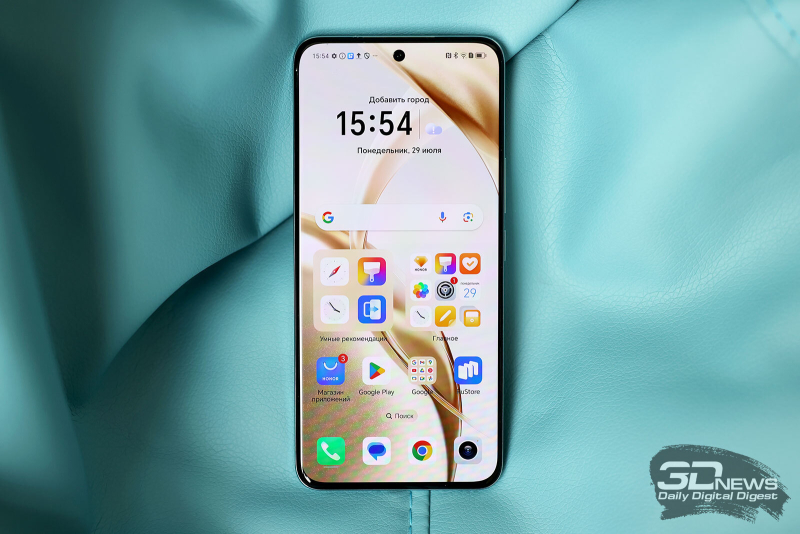
It’s difficult because the smartphones look almost the same and carry identical values. At a minimum, the key feature – shooting portraits – is common here, and the models do not differ in how they work with this function. So if you are interested in a “portrait smartphone,” you can save money. But let’s briefly go over the capabilities and characteristics of the HONOR 200 to get a more or less general picture.
Design, display, software
At first glance, there are simply no external differences between the HONOR 200 and the Pro version – the same shapes, the same oval camera block, the same “marble” glass back panel, which is combined with plastic edges. But upon closer examination, you notice many nuances.
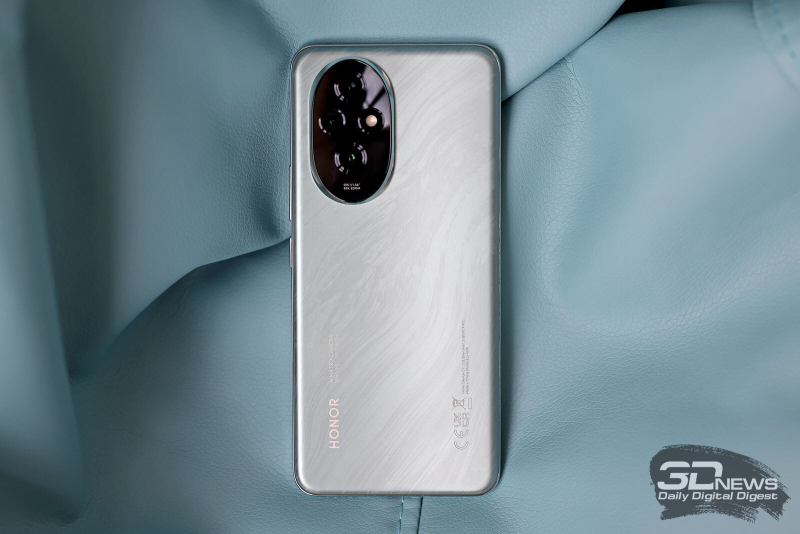
Firstly, the front camera. Here it is not double – and this is rather a plus of the HONOR 200. I did not notice any serious differences in the operation of the front camera, but the hole is smaller and not so striking. Secondly, the same rear unit – in it the lenses are located symmetrically, the main camera no longer requires so much space. Well, thirdly, the front panel is not curved at the edges; it is more traditional 2.5D glass.

And the screen itself is a little smaller – it seems precisely due to those same curved edges. The characteristics of the panel are essentially the same: it is OLED with increased resolution (here – 2664 × 1200 pixels) and high pixel density (436 ppi) and a declared peak brightness of 4000 cd/m2. Using a smartphone in the sun is no problem; HDR content is fully displayed.
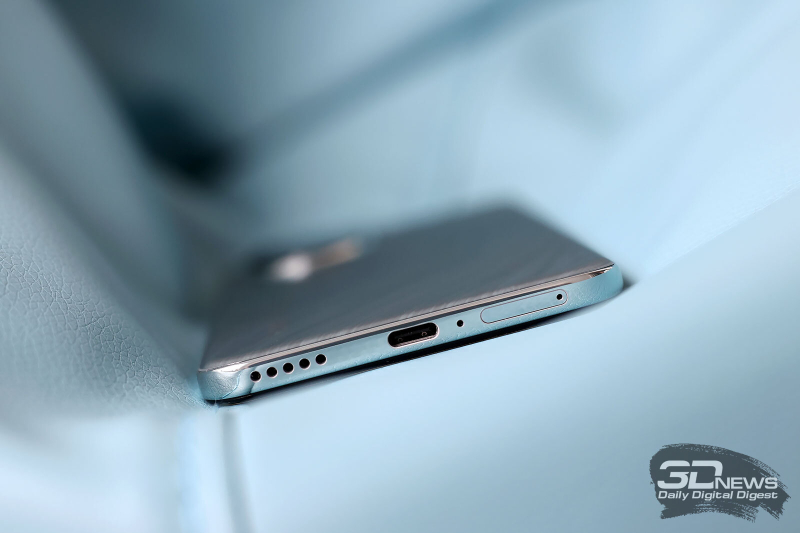
At the same time, HONOR 200 is slightly thinner and lighter than the Pro version – the case thickness is 7.7 mm, weight – 187 grams. Despite the large screen and generally solid dimensions, using the smartphone is quite convenient.
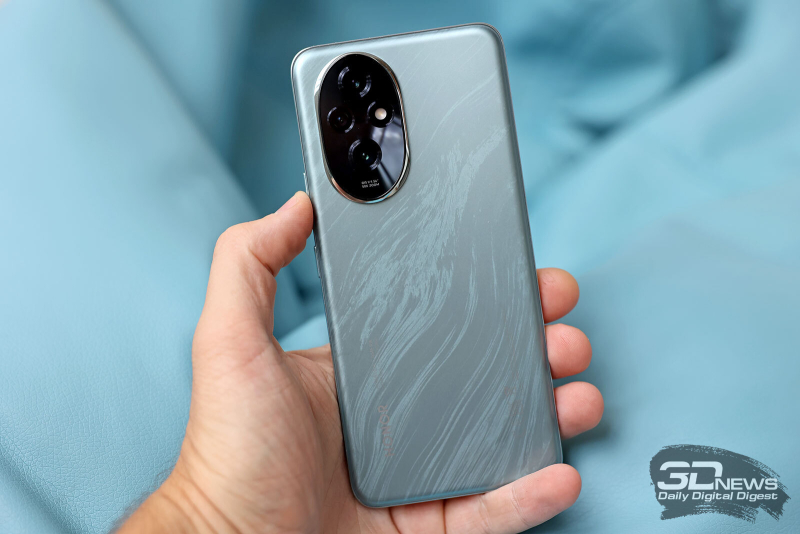
But the back panel, with a similar design, is slightly less pleasant to the touch, the processing method is slightly different, and the surface is not velvety. The general impressions, as you understand, are the same, plus or minus. It is also unknown what kind of tempered glass is used, and there is no official information about moisture protection.
The functional elements are also the same – there is no mini-jack, the keys are on the right side, at the top and bottom of the speaker grille. Yes, there are also stereo speakers here; progress relative to previous license models has also affected the regular HONOR 200.
Of course, HONOR 200 runs Android 14 with MagicOS 8 shell. Let us once again note its key features and specific functions: Magic Portal tries to predict your actions and recommends applications based on your actions (there is a special widget for this on the main screen. Magic Text allows you to copy text from a picture in one click. Magic Capsule is a widget in the area of the front camera cutout that displays notifications from your favorite applications in real time and allows you to quickly access certain settings. Parallel Space separates applications for personal and work use. .
The system works quickly and stably; I had no questions about the speed of opening applications and the software operation of the camera. The system takes up almost 15 GB of memory, the manufacturer promises 4 years of software updates and 6 years of security updates.
The fingerprint scanner is again located in the surface of the screen: an optical sensor that works well and quickly, but is located, as usual, too close to the bottom edge of the screen. There is a user identification system by face using a single front camera.
«Hardware, battery, wireless connections
HONOR 200 runs on the Qualcomm Snapdragon 7 Gen 3 hardware platform, a mid-range solution introduced last fall and quite common in its segment. But smartphones with this platform have not yet reached us – HONOR 200 was the first.
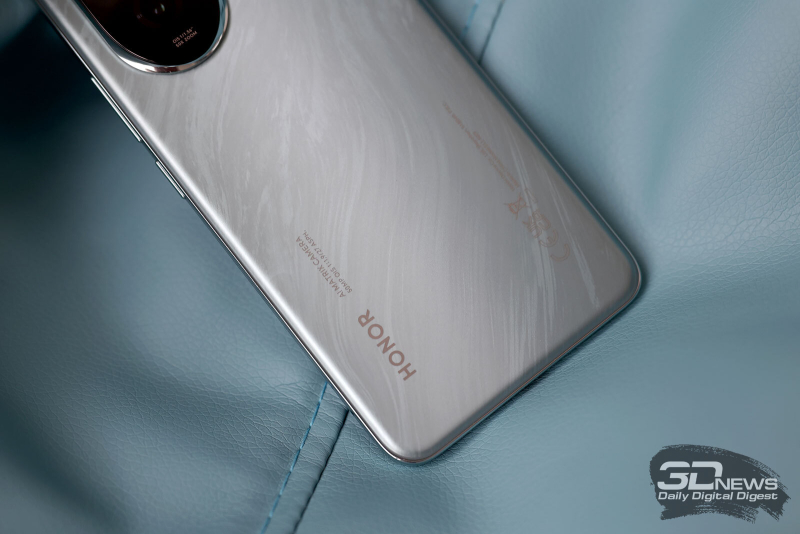
Snapdragon 7 Gen 3 architecture: main core ARM Cortex-A715 with a frequency of 2.63 GHz, three simpler Cortex-A715 with a frequency of 2.4 GHz and three Cortex-A510 with a frequency of 1.9 GHz; Adreno 720 graphics. There is no built-in neural processor – for this you need to turn to the older version of the chipset, 7 Gen 3 Plus. But this is, in fact, the only noticeable drawback of the platform, which does not particularly affect the user experience. The performance is quite serious – lower than that of the Snapdragon 8s Gen 3 (like the HONOR 200 Pro), but not as significant as it might seem.
At the same time, the platform heats up noticeably less and does not throttle, unlike the Snapdragons of the 8th series. This makes up for the 20-30 percent performance gap. By the way, there is also a lot of memory: 12 GB of RAM and a 512 GB drive.
Wireless connections are the same as on Pro: Wi-Fi 6, Bluetooth 5.3, navigation module with all the necessary systems, 4G and 5G modems with support for a wide range of bands. AI, which is really nice, HONOR 200 also works with eSIM, which is a huge rarity for the mid-price segment.
The battery, again, is no different from the one in the HONOR 200 Pro – a silicon-carbon battery with a capacity of 19.76 Wh (5200 mAh, 3.8 V). The battery life is quite standard for a smartphone of this format. But the charging speed is above average thanks to support for adapters with a power of up to 100 W (this is also included in the kit). But there is no wireless charging option.
Camera
The three rear cameras are close in their capabilities to what we saw on the HONOR 200 Pro: three focal lengths, two modules with Quad Bayer sensors.
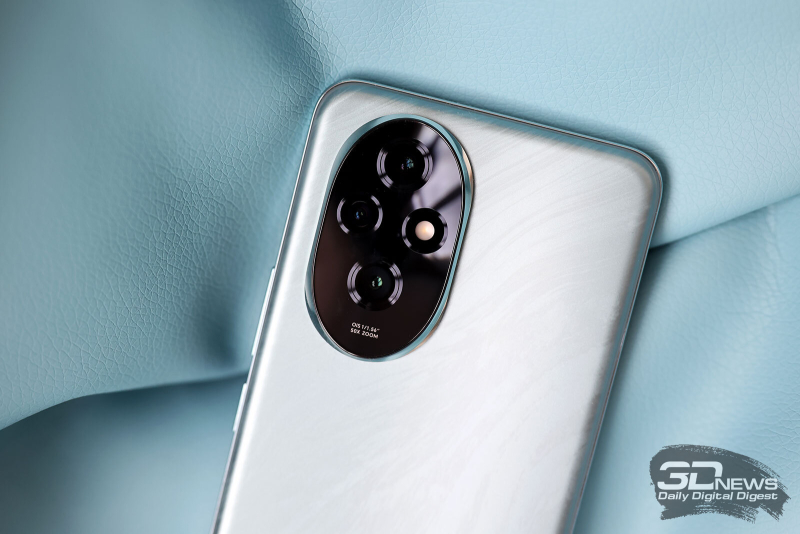




















From left to right: Wide angle shooting, standard focal length, 2x hybrid zoom and 2.5x optical zoom
Actually, the main shooting options are the same – the optical zoom is very small (2.5x) and it is, in fact, duplicated by a “hybrid” zoom, which uses a crop from a 50-megapixel image taken with the main camera. But in this case, the differences between these scaling options are in favor of optical zoom; the main camera of the HONOR 200 cannot achieve as high a result as on Pro.
At the same time, the main camera itself, without using a zoom, is more than capable – at night it is weaker, but during the day the picture is not much inferior to what we saw on the HONOR 200 Pro. You can only pay attention to the slightly weaker dynamic range. But we note a more stable white balance across the entire range of focal lengths. The basic settings in the pre-production firmware of the HONOR 200 turned out to be more correct than those of the older model.



Branded image profiles are in place, which, unlike basic filters, work with the image more subtly, and do not simply tint it. Examples are above.








But, of course, the key characteristic of the smartphone is portrait mode, developed jointly with the French studio Harcourt. When taking a portrait, you are also offered to choose from three profiles (with no option to turn them off). Harcourt Vibrant hardly changes colors, but works with the balance of highlights and shadows, making the image appear softer. Harcourt Color simulates vintage cameras, but shoots in color – warm tones, reduced saturation. Harcourt Classic shoots black and white portraits with increased contrast – this is already a classic. Add to this three focal lengths, correct background blur (coupled with a nice bokeh pattern) and customizable retouching – and we get one of the most interesting portrait modes on the market. And yes, it works here, essentially no worse than the HONOR 200 Pro. Except that in low-light conditions, portraits don’t turn out so great, which is typical for the younger version of the camera in general.


I’ll add that the Harcourt Classic black-and-white mode (like the other two) can be used not only for shooting portraits – and the picture will also be very juicy and thoroughbred.
The HONOR 200 shoots video in 4K resolution at up to 60 frames per second – in this format you can shoot with the main and zoom cameras (with the ability to switch between them – and yes, the zoom is again threefold); With wide-angle you can also shoot in 4K but at 30 frames per second.


The front camera has a 50-megapixel sensor with an ƒ/2.1 aperture lens without autofocus and flash. Shooting is carried out only in a resolution of 12.5 megapixels, but two focal lengths are available – the difference between them is minimal, but enough for a joint selfie. There is artificial background blur and retouching. Harcourt selfie filters are no longer available.
Conclusion
HONOR 200 is a very interesting approach to creating a junior version of a sub-flagship. It seems that there are quite a few compromises in the characteristics, but the general spirit of the model and its key features have been preserved. It is in terms of interaction experience that HONOR 200 is not much different from HONOR 200 Pro, with a significant difference in price. The real difference is felt only in such “premium” aspects as the design of the case (the HONOR 200 is noticeably “cheaper”), moisture protection, wireless charging and night shooting with the main camera.